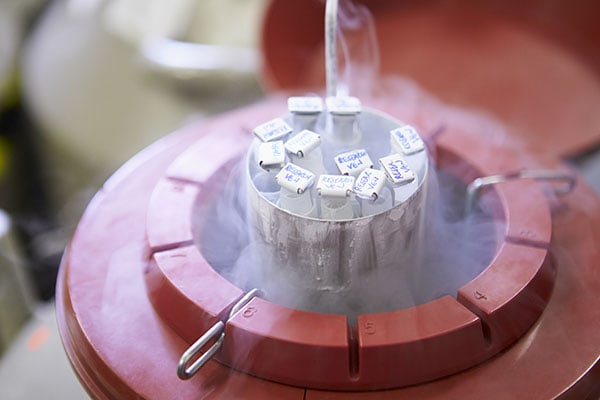Egg vitrification
Vitrification is the most widely used assisted reproduction technique for women who want to postpone their dream of being mothers or for those who have undergone radiotherapy and chemotherapy treatments.
Through this procedure, women under the age of 37 may freeze a limited number of ova (depending on the ovarian reserve), which will then be fertilized in the laboratory and transferred to the patient when she wishes to become a mother.

What does the procedure consist of?
The first step is the stimulation of the ovaries using medications, whose action is like that of certain hormones produced by the woman. The medicines to be used include information that the patient must review with her doctor. This treatment aims to obtain and develop several follicles in the ovary, where the eggs are found. Other medications with suppressive hormonal action are administered to prevent spontaneous ovulation (before egg extraction).
The ovarian stimulation process is usually controlled by analyses that report the number and size of developing follicles. When the eggs obtained have a proper development, other medications are administered to achieve the final maturation of the eggs. Many medicines used in this process are injections, and those allow the patient to administer them herself.
The dosages and clinical guidelines are adapted to the clinical characteristics of each patient, and as such, the response to treatment may vary.
The eggs are extracted by puncturing the ovaries and aspirating the follicles, under ultrasound guidance and through the vaginal cavity. This procedure is usually outpatient, requiring anesthesia and posterior observation during a variable period.
The eggs obtained are prepared and classified in the laboratory. The number, maturity, and quality of eggs extracted during the puncture depend on each woman’s response to the hormonal treatment and cannot be accurately predicted. In some cases, it may be necessary to perform several ovarian stimulations to accumulate enough eggs.
Who can access egg vitrification?
Through this procedure, women under the age of 37 may freeze a limited number of ova (about 20 per procedure), which will then be fertilized in the laboratory and transferred to the patient when she wishes to become a mother.
In addition, women who present:
- Malignant diseases that require the application of treatments with potentially harmful effects on reproductive capacity (surgery, chemotherapy, radiotherapy)
- Non-malignant diseases that require the same treatments or that can injure the ovarian cells.
- Disorders or conditions associated with decreasing the ovarian reserve include risk of ovarian failure, advanced age, etc.
- Preservation of female fertility in other circumstances.
Each patient’s medical, social, or occupational characteristics may modify the general risks or occurrence of specific risks.
If you want to know more about the topic of egg vitrification.
Contact us in our lines:
- Medellín: +57(4) 268 80 00
- Bogotá: +57(1) 746 98 69
- Cartagena: +57(5) 693 04 34
- Pereira: +57(6) 340 17 09
- Whatsapp: +57 316 3033866




